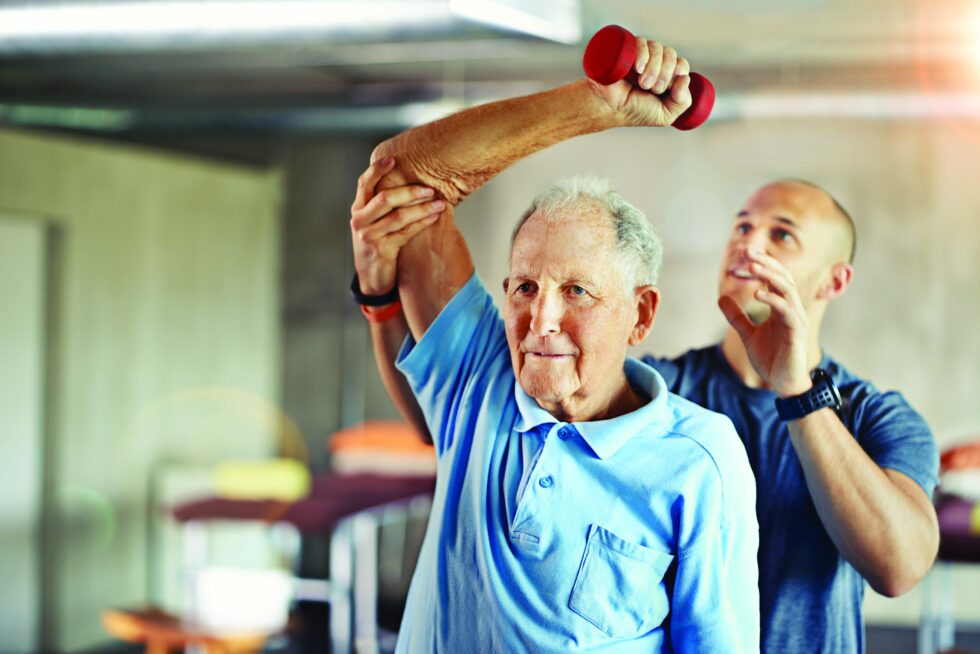
By Dr. Zach Schmucker PT, DPT
Physical therapy (PT) is a journey of healing and recovery. For many older adults, this journey begins after a fall, a joint replacement, or to address chronic pain or mobility issues.
While physical therapy offers tailored exercises, expert guidance, and tools to regain strength and independence, there’s one crucial factor that can determine its success: your active participation. The old adage, “You get out of it what you put into it,” rings especially true in physical therapy.
Why Effort Matters in Physical Therapy
Physical therapy isn’t a passive process. While your physical therapist will create a customized plan to help you recover, the exercises, stretches, and routines are only effective if you commit to them. The time you spend in the clinic, often one to three times a week, is just a small fraction of your overall recovery process. The real progress happens when you consistently practice the prescribed exercises at home and maintain an active mindset throughout your day.
When you actively participate in physical therapy, you:
Build strength and flexibility faster. Following your therapist’s plan helps rebuild the muscles and tissues that support your body. Consistency is key to achieving these improvements.
Reduce pain and stiffness. Moving regularly and properly, even when it feels uncomfortable, helps blood flow, decreases inflammation, and prevents joint stiffness.
Regain independence. The more effort you put in, the sooner you’ll notice improvements in balance, walking, and everyday activities like climbing stairs or getting in and out of a chair.
Challenges Older Adults Face — and How to Overcome Them
Older adults recovering from falls or surgeries may feel hesitant to push themselves. Pain, fear of falling again, or doubts about their abilities can create mental roadblocks. These feelings are valid, but they don’t have to hold you back.
Here are some ways to overcome common challenges:
Set Realistic Goals: Start small and celebrate milestones. Whether it’s walking an extra few steps each day or improving your range of motion, acknowledging progress can motivate you to keep going.
Communicate with Your Therapist: Your therapist is your partner in this process. If something feels too difficult or painful, speak up. They can adjust your plan to better suit your needs and comfort level while still challenging you.
Stay Positive: Recovery takes time. It’s normal to have setbacks, but staying positive and focused on your goals can help you persevere.
Get Support: Engage family members, friends, or a caregiver to remind you to do your exercises and cheer you on. Having a support system makes a big difference.
The Rewards of Hard Work
When you commit to physical therapy, you’re investing in yourself. The benefits go beyond physical improvements. Many older adults report that sticking to their therapy program improves their overall confidence, mood, and quality of life.
Consider this: after an injury or surgery, some people return to walking comfortably within weeks, while others struggle for months. Often, the difference lies in how diligently they follow their PT plan. Those who embrace the process and put in the effort often see faster, longer-lasting results.
A Few Tips for Staying on Track
Make PT Part of Your Routine: Treat your home exercises like a daily appointment. Set reminders on your phone or pair exercises with another habit, like doing them before lunch or after your morning coffee.
Stay Consistent, Even on “Off Days”: Some days, you may feel tired or unmotivated. Doing even a little bit of movement can keep you from losing progress.
Focus on the Big Picture: It’s easy to get caught up in the discomfort of a single session, but remind yourself of the greater goal—regaining your freedom to move and enjoy life.
Physical therapy is a partnership between you and your therapist, but the success of that partnership depends on your effort. It’s not just about showing up to appointments; it’s about showing up for yourself every day. Whether you’re recovering from a fall, surgery, or managing chronic pain, remember that the work you put into physical therapy is an investment in your health, independence, and quality of life.
The road to recovery may feel challenging, but with dedication, patience, and trust in the process, you’ll be amazed at what you can achieve. After all, your effort is the most powerful tool in your recovery journey.


